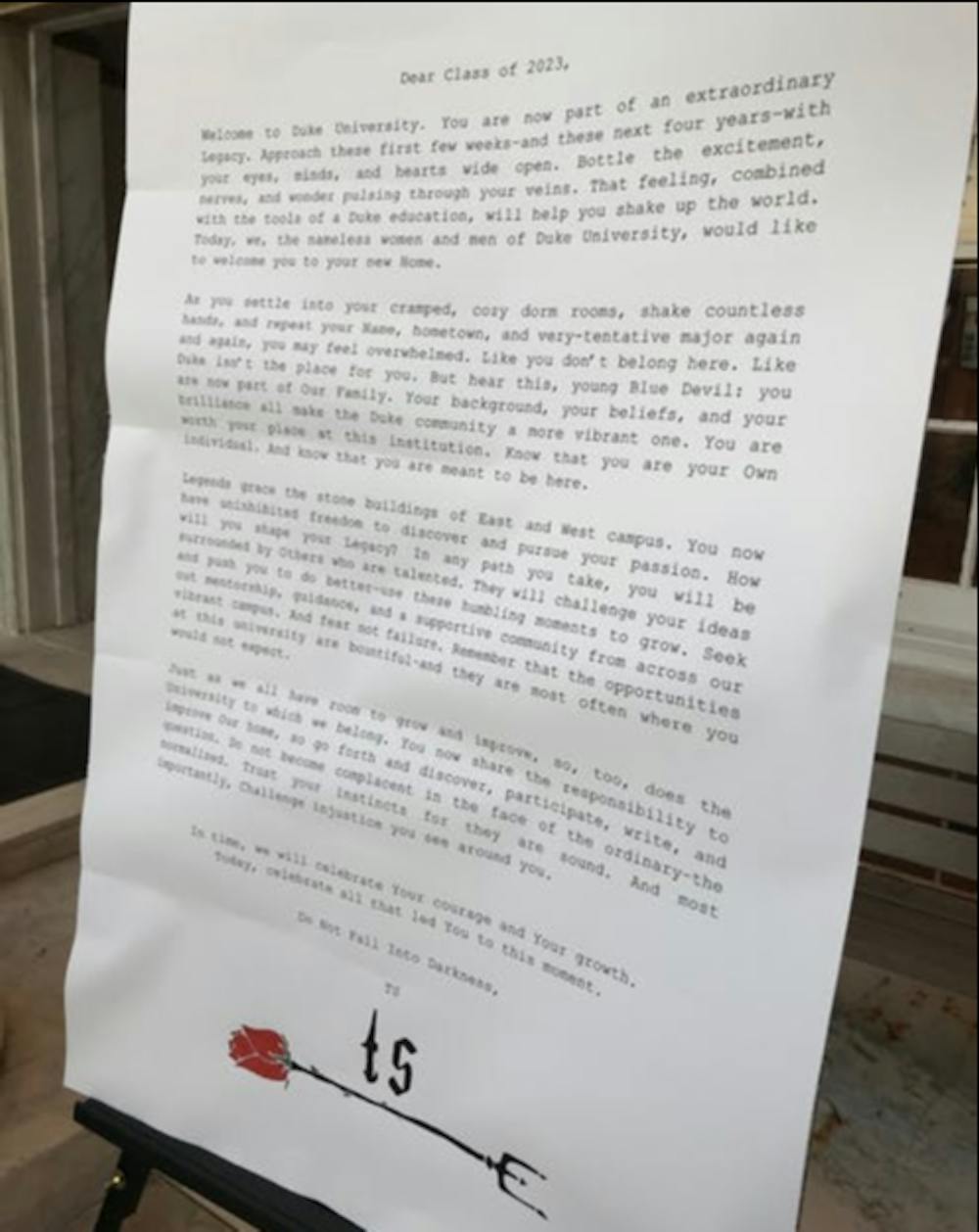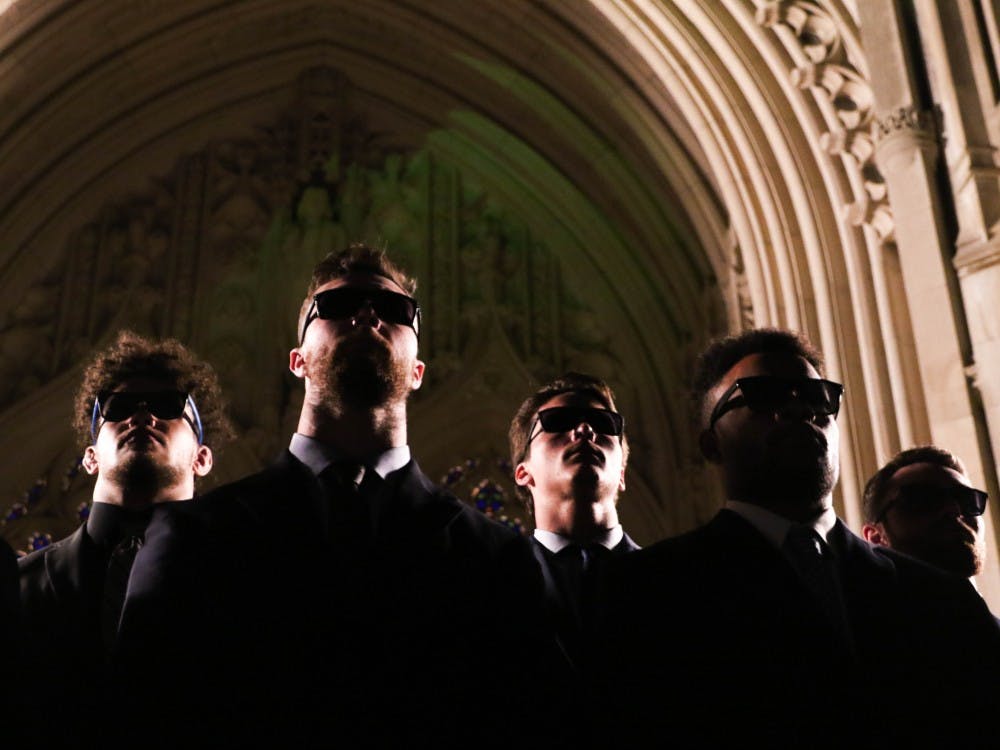Under the Gothic breezeways and the dim night of Duke’s campus quads, it might not be all that surprising to spot robed figures walking around the Chapel near the end of the school year.
These individuals are members of the Old Trinity Club, one of Duke’s secret societies.
Duke has had a number of secret societies in its history, stretching from The Order of the Red Friars to the modern-day Old Trinity Club and Trident Society. Founded in 1913, The Order of the Red Friars was an all-male group with members holding high level positions in student government, The Chronicle and the Interfraternity Council.
Members of the Red Friars were given access to the Board of Trustees, the administration and more. Their members include alumni such as President Richard Nixon, Duke President Arthur Hollis Edens and William Wannamaker, former Duke professor and namesake of Wannamaker dorm. The Order of the White Duchy was established as a female counterpart in 1925. Several decades later, both groups voluntarily disbanded.
“It became a very unpopular thing,” Dean of Students Sue Wasiolek told Rival Magazine in 2007. “It was at a time when a lot of fraternities and sororities disbanded—not just at Duke but across the country. It was in the ‘60s, it was after the Civil Rights Movement, it was after the Vietnam War, and the whole notion of having selective elitist organizations was not popular.”
This absence paved the way for the emergence of the Old Trinity Club—a group reportedly formed by a displeased editor of The Chronicle who had not been tapped by the Red Friars. With a presence on campus today, this group is best known for its antics around the time of the Last Day of Classes each spring when members of the group can be seen standing on the Chapel steps in suits and sunglasses.
Photographs of Old Trinity Club members standing on the steps reveal Duke men’s basketball players among them, including Antonio Vrankovic, Trinity ’19, and seniors Jack White and Javin DeLaurier.

In April 2018, then-senior Colleen Sharp, Trinity ‘18, decided to look into their LDOC rituals a bit more. The previous year, Sharp had tried to take pictures of the men as they stood in orderly rows in front of the Chapel. However, they began to hide their faces and block the camera as she approached, she said at the time.
The men remained silent but when she and others began asking questions, they chose to use their phones to type out messages in response. One such message read, “I wouldn’t ask questions if I were you.”
The following year, she watched as they surrounded the James Buchanan Duke statue on the quad with candles and chanted before sprinting to the circle by the Bryan Center and filing into cars to drive away.
The Old Trinity Club is not the only secret society that remains on Duke’s campus today. Earlier this semester, the Trident Society displayed a note to members of the Class of 2023 outside Marketplace on East Campus.
“Welcome to Duke University. You are now a part of an extraordinary Legacy,” the message began.
Such notes have previously been found in other areas of campus, sometimes accompanied by a rose.
“In time we will celebrate Your courage and Your growth. Today, we celebrate all that led You to this moment. Do Not Fall Into Darkness, TS,” the message ended.

The Trident Society also made headlines in 2013 when Chronicle columnist Samantha Lachman, Trinity ‘13, emailed Executive Vice President Tallman Trask about his rumored connection to the society. In his response, he copied three alumni—two former Young Trustees and a professional racecar driver.
Although his email read, “Don’t really know much about them. Sorry.,” his copying of these three individuals suggested otherwise to Lachman. Four minutes after his first response, Lachman received a follow-up which read, “The CCs on my previous message were meant to be BCCs. Pls ignore.”
The administration’s potential involvement with such a secret society raises a number of questions regarding who exactly is involved with these groups, how much power they have and how high up in administration their influence extends.
Get The Chronicle straight to your inbox
Signup for our weekly newsletter. Cancel at any time.

